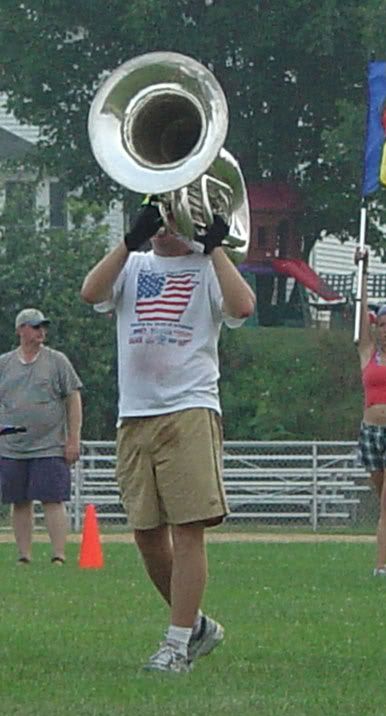Well, because a lot of them suck.Skier_Forever wrote:Why is it that they are so underused?
No, really, most marching tubas are pretty awful, especially the ones that band instrument manufacturers were slapping together in the mid 70's to the mid 80's. They were often too small to create a worthwhile sound and/or were ergonomic disasters, whether they had bad hand positions, poor sightlines through tubing, or just too front-heavy. Many of those designs have not gone away.
Sousaphones do get a big sound, and they have that traditional look that even I wouldn't abandon. Can you imagine Ohio State's marching band "dotting the 'I'" with a contra-style marching tuba? I sure can't.
King's large K90 contrabass from about 1981 was the first truly capable marching tuba, but it certainly wasn't adopted outside of drum corps -- it was still in G with two piston valves and a half-step slide. DEG/Dynasty/Willson responded with a pretty darn good Super Magnum contra, even building them with 3 valves for the European drum corps circuits a few years before DCI allowed their use in the US.
The current crop of BBb non-convertible marching tubas from Kanstul, Yamaha, Dynasty, and King (so far) are turning out to be really good instruments by any standard.
Does that make them the best choice for "your marching band"? Maybe, maybe not.
If you use flip folders to play an hour's worth of music in the stands, do a lot of step-2 drill, have 5' tall 90-pound players, and enjoy dancing down a parade route (which is good -- it does help pass the time), sousaphones are still the better choice. They allow things that are either difficult or highly impractical for marching tubas.
If, however, you have a field show style that has a lot of sideways movement, and have strong players (preferably ones that eat raw meat
Which do *I* prefer to use?
It depends.







